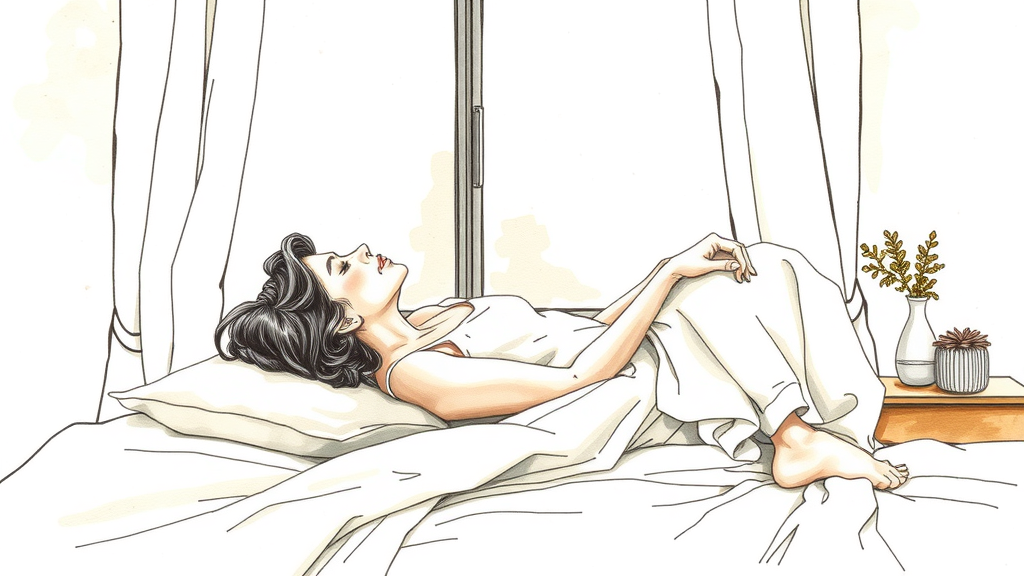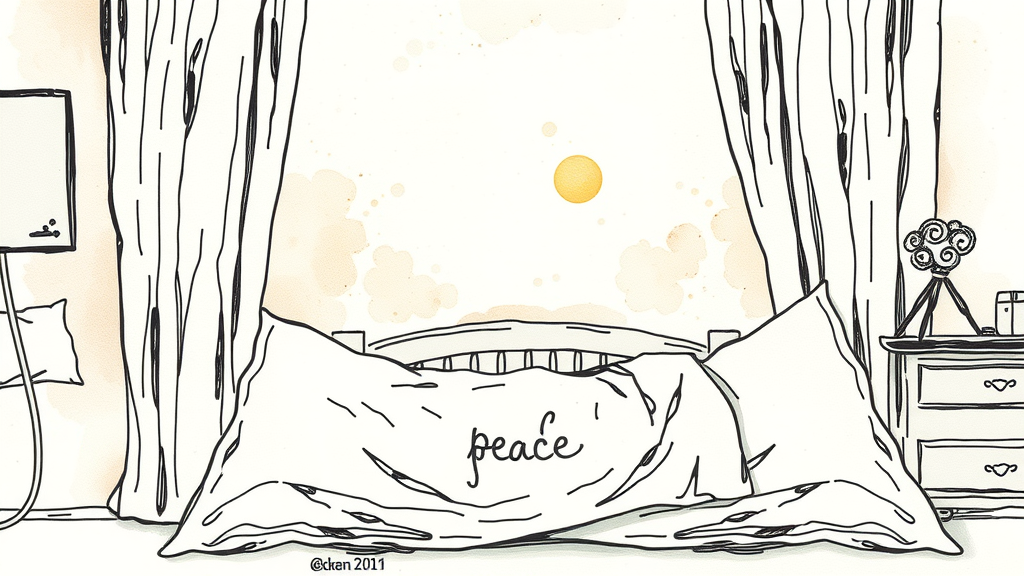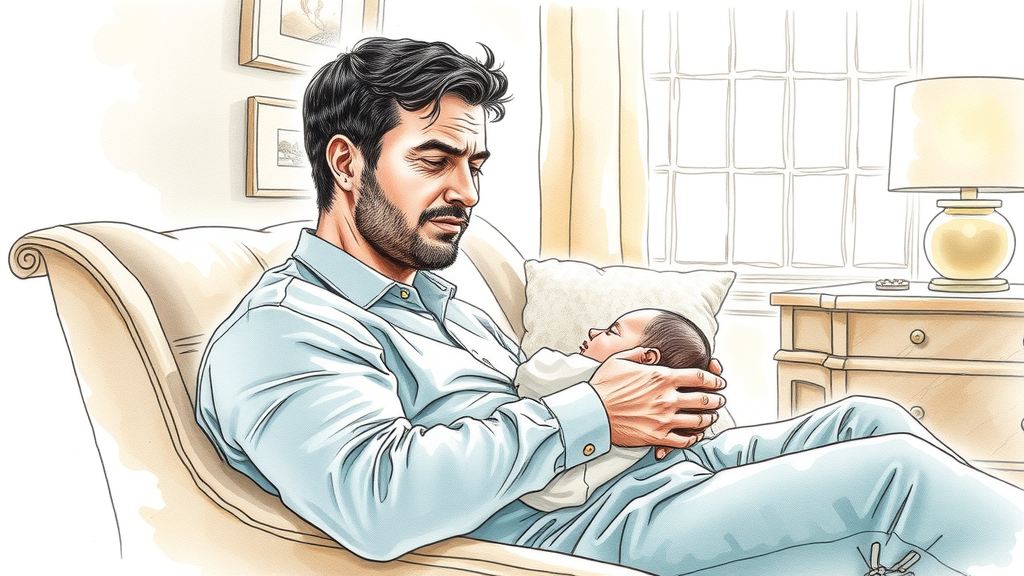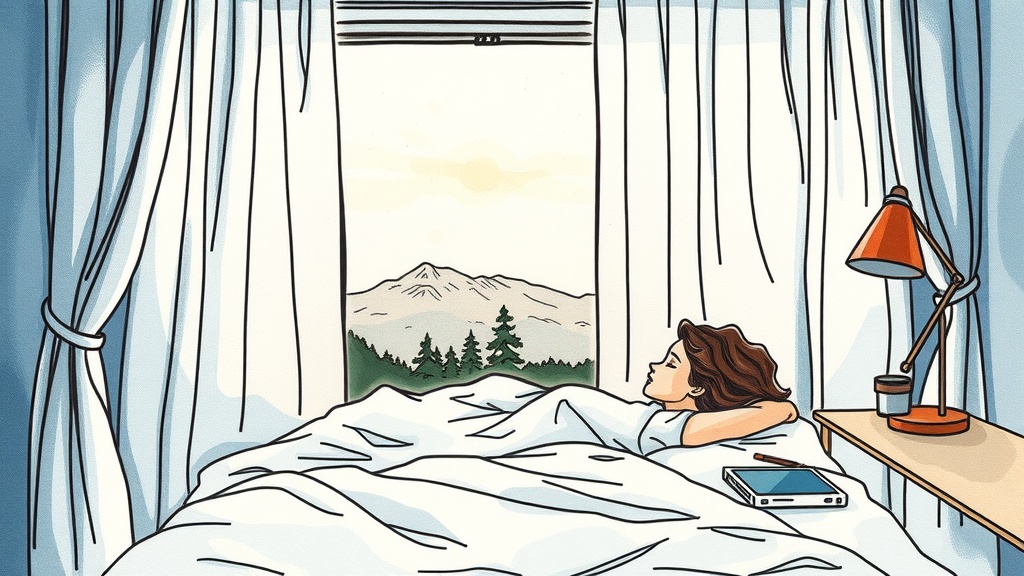· AI Content Specialist · Sleep Health · 11 min read
The Ultimate Guide to CBTI Sleep Therapy for Shift Workers
Struggling with shift work sleep? Discover how Cognitive Behavioral Therapy for Insomnia (CBTI) offers drug-free, lasting relief.

The Unique Sleep Challenges of Shift Work
Shift work is an undeniable reality for millions globally, powering essential services, healthcare, and industries around the clock. While crucial, this lifestyle often comes at a steep personal cost: sleep disruption. Unlike those who work a traditional 9-to-5 schedule, shift workers constantly battle against their body’s natural circadian rhythm, leading to a higher prevalence of sleep disorders, most notably insomnia. This constant struggle for rest can impact everything from mood and energy levels to long-term health and safety.
The inability to achieve consistent, restorative sleep leaves many shift workers feeling perpetually tired, irritable, and less productive. Traditional remedies often fall short, or rely on sedative medications which can come with unwanted side effects and dependencies. This is where Cognitive Behavioral Therapy for Insomnia (CBTI) emerges as a powerful, non-pharmacological, and highly effective solution. As a leading drug free sleep treatment, CBTI offers a sustainable path to insomnia relief tailored specifically for the complexities of a non-standard schedule.
Understanding Cognitive Behavioral Therapy for Insomnia (CBTI)
At its core, cognitive behavioral therapy for insomnia (CBTI) is an evidence-based sleep therapy that addresses the underlying thoughts, feelings, and behaviors that contribute to sleep difficulties. It’s not merely a set of tips for better sleep hygiene; rather, it’s a structured, systematic approach that re-trains your brain and body to sleep more effectively.
Unlike sleep medications, which often provide temporary solutions, CBTI equips individuals with long-term strategies for managing their sleep. It operates on the principle that insomnia is maintained by learned habits and negative thought patterns, and by identifying and modifying these, genuine insomnia relief can be achieved. This drug free sleep treatment is widely recognized as the first-line intervention for chronic insomnia by major medical organizations.
Why CBTI is Ideal for Shift Workers
Shift work presents unique sleep challenges that traditional sleep advice often fails to address adequately. Your internal body clock (circadian rhythm) is wired for a daytime awake, nighttime sleep pattern. When your work demands you defy this, your body experiences “circadian misalignment.” This can manifest as difficulty falling asleep when you need to, waking up too early, or experiencing non-restorative sleep.
CBTI is particularly well-suited for shift workers because it:
- Addresses Root Causes: Instead of merely masking symptoms, CBTI targets the behavioral and cognitive factors that perpetuate insomnia in the face of irregular schedules.
- Empowers Individuals: It teaches practical skills and strategies that shift workers can apply independently, giving them control over their sleep, even when their external schedule changes.
- Is Non-Pharmacological: For a population often concerned about alertness and potential side effects on the job, a
drug free sleep treatmentlike CBTI is invaluable. - Offers Adaptability: While consistency is a CBTI principle, the therapy can be flexibly adapted to accommodate rotating shifts, providing strategies for managing different sleep windows. This adaptability is key for
insomnia reliefwhen your schedule is in constant flux. For a foundational understanding ofCBTI strategies tailored for shift workers, you might find deeper insights in our comprehensive guide.
Key Components of CBTI Tailored for Shift Workers
CBTI is a multi-component therapy, integrating several techniques to achieve lasting insomnia relief. When applied to shift work, these components are adapted to fit the unique demands of an irregular schedule.
1. Sleep Restriction Therapy (SRT)
This may sound counterintuitive, but SRT involves limiting the time you spend in bed to the actual amount of time you are sleeping. The goal is to consolidate sleep, making it more efficient and deeper. For shift workers, this means:
- Identifying Core Sleep Windows: Even if your sleep window shifts, determine a consistent “opportunity” for sleep.
- Calculating Sleep Efficiency: Track how much time you are actually asleep versus how much time you are in bed.
- Gradual Expansion: Once sleep efficiency improves, gradually increase your time in bed until you reach an optimal duration.
This technique helps build a stronger drive to sleep, improving the quality of your limited sleep time.
2. Stimulus Control Therapy (SCT)
SCT aims to break the negative associations you might have developed with your bed or bedroom (e.g., using it for worrying, watching TV, or simply lying awake). For shift workers, this is paramount:
- Bedroom for Sleep Only: Your bedroom should primarily be used for sleep (and intimacy). Avoid eating, working, or watching stimulating media in bed.
- Leave Bed if Awake: If you can’t fall asleep within 15-20 minutes, or if you wake up and can’t get back to sleep, get out of bed. Go to another quiet, dimly lit room and do something relaxing until you feel sleepy again.
- Consistent Wake-Up Time: This is critical, even on days off. A consistent wake-up time helps regulate your circadian rhythm, regardless of when you went to bed. This might require careful planning, especially if you’re a
caregiver balancing various demands, but the principle remains sound forinsomnia relief.
3. Sleep Hygiene Education (Shift-Specific)
While often misunderstood as the entirety of CBTI, good sleep hygiene provides the foundational environment for sleep. For shift workers, this requires specific adaptations:
- Light Exposure Management:
- Before Sleep (Day or Night): Create darkness. Use blackout curtains, wear an eye mask, turn off bright screens (phones, tablets, TVs) at least an hour before your planned sleep. Consider amber-tinted glasses if you must use screens.
- Upon Waking: Expose yourself to bright light (natural sunlight if possible, or a light therapy lamp) to signal to your body that it’s “daytime” for you.
- Temperature Control: Keep your sleep environment cool, dark, and quiet.
- Diet and Substances: Avoid heavy meals close to sleep. Be mindful of caffeine (especially 6+ hours before sleep) and alcohol (which disrupts sleep quality).
- Napping Strategy: Strategic napping can be beneficial for alertness, but unplanned or long naps can interfere with your main sleep period. Short, pre-shift naps (20-30 minutes) can be more effective than long, restorative ones.
4. Cognitive Restructuring
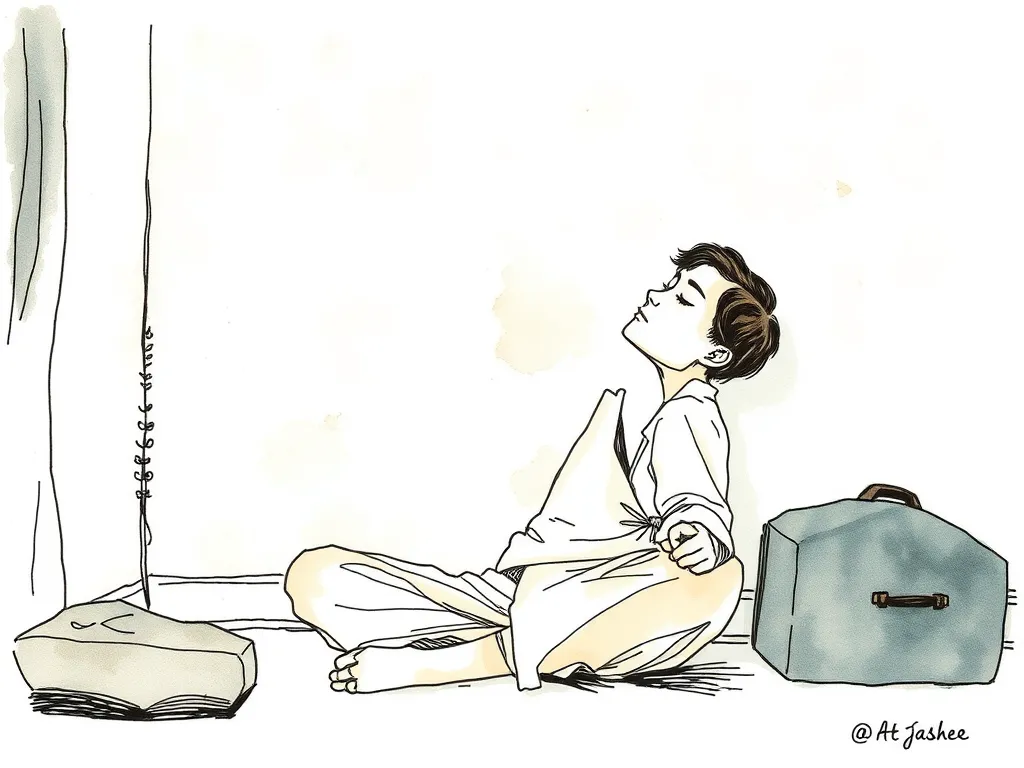
This component of cognitive behavioral therapy for insomnia addresses the negative thoughts and beliefs about sleep that can perpetuate insomnia. Shift workers often develop highly negative associations with sleep, such as “I’ll never get enough sleep,” or “My sleep is always terrible.”
- Identify Maladaptive Thoughts: Recognize thought patterns that contribute to anxiety about sleep.
- Challenge and Reframe: Learn to challenge these thoughts and replace them with more realistic, balanced perspectives. For example, instead of “I won’t be able to function tomorrow,” reframe to “I might be tired, but I can still manage, and I’m working on improving my sleep long-term.”
- Reduce Performance Anxiety: Shift workers often feel immense pressure to “perform” sleep when they have the chance, leading to heightened anxiety. Cognitive restructuring helps reduce this pressure.
5. Relaxation Techniques
Stress and anxiety are major contributors to sleep problems. Learning to relax your mind and body can significantly improve sleep onset and quality. Techniques include:
- Diaphragmatic Breathing: Slow, deep breaths can activate the parasympathetic nervous system, promoting relaxation.
- Progressive Muscle Relaxation (PMR): Tensing and then relaxing different muscle groups throughout the body to release tension.
- Mindfulness Meditation: Focusing on the present moment to quiet a racing mind. These techniques are particularly beneficial for
physically demanding professions, like athletes, where both physical and mental recovery are paramount for optimal performance.
Implementing CBTI in a Shift Work Schedule
The beauty of CBTI lies in its adaptability. While an ideal scenario involves a consistent schedule, a skilled CBTI therapist can help you apply these principles to your specific shift rotation.
- Consistent Core Sleep Window (When Possible): Even if your schedule rotates, try to identify a “core” sleep window you can maintain as consistently as possible. For example, if you often work nights, your main sleep might be 9 AM to 4 PM.
- Managing Transition Days: These are the toughest. Prioritize short, strategic naps before a shift change. Adjust light exposure to help shift your circadian rhythm.
- Days Off Strategy: While tempting to revert to a “normal” schedule, try not to drastically shift your wake-up time. Keeping it within an hour or two of your “work day” wake-up time can prevent “social jet lag.” This commitment to sleep wellness is akin to the dedication seen in
teachers striving to reclaim rest and well-beingamidst their demanding schedules. - Personalized Approach: Working with a CBTI therapist is highly recommended. They can help you create a personalized sleep schedule and strategy that accommodates your specific work demands, family life, and individual sleep patterns. They provide guidance on how to tweak
sleep therapyelements for maximuminsomnia relief.
The Long-Term Benefits of CBTI for Shift Workers
Embracing CBTI is an investment in your overall health and well-being. The benefits extend far beyond simply getting more sleep:
- Sustainable Insomnia Relief: Unlike medications, CBTI teaches you lifelong skills to manage your sleep, offering durable
insomnia relief. - Improved Alertness and Performance: Better sleep means enhanced cognitive function, fewer errors, and improved safety on the job.
- Enhanced Mood and Mental Health: Chronic sleep deprivation is closely linked to mood disorders. CBTI can significantly improve mood, reduce irritability, and lessen symptoms of anxiety and depression.
- Better Physical Health: Adequate sleep supports immune function, metabolic health, and reduces the risk of chronic diseases often associated with shift work. This fundamental improvement in sleep quality, achieved through a
drug free sleep treatment, offers substantial benefits across all demographics, includingseniors who often face unique sleep challenges. - Increased Quality of Life: Reclaiming restful sleep allows you to fully enjoy your time off, engage with family and friends, and pursue hobbies, leading to a richer, more fulfilling life.
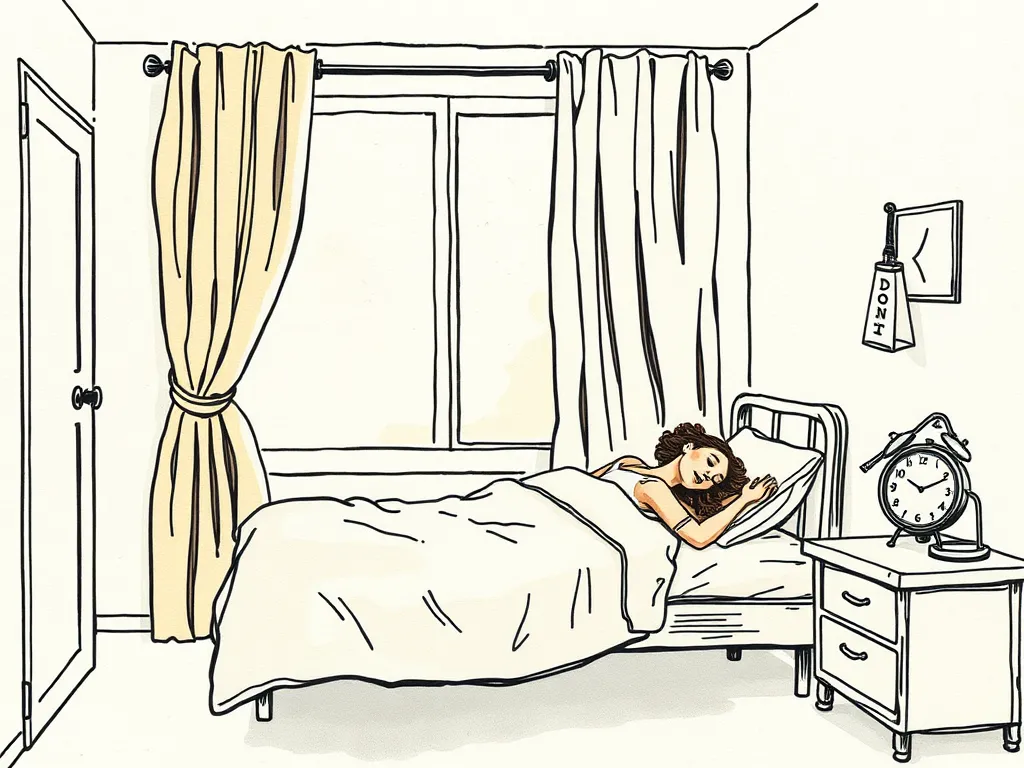
Finding Support for Your CBTI Journey
While some aspects of CBTI can be self-taught, working with a certified CBTI therapist is highly recommended, especially for the complexities of shift work. These specialists can:
- Provide personalized guidance and adapt strategies to your unique schedule.
- Help you track progress and make necessary adjustments.
- Offer accountability and support throughout the process.
Many online CBTI programs and telehealth options are also available, making this sleep therapy more accessible regardless of your location or busy schedule.
Conclusion
Shift work doesn’t have to mean a lifetime of sleep deprivation. Cognitive behavioral therapy for insomnia offers a scientifically proven, drug free sleep treatment that empowers shift workers to regain control over their sleep and lives. By understanding and implementing the core principles of CBTI – sleep restriction, stimulus control, sleep hygiene, cognitive restructuring, and relaxation techniques – you can navigate the challenges of your schedule with greater rest, resilience, and well-being. Invest in your sleep, and unlock a healthier, more productive future.
Frequently Asked Questions About CBTI for Shift Workers
Q1: Is CBTI a quick fix for shift worker insomnia?
A1: No, CBTI is not a quick fix. It’s a structured sleep therapy that requires commitment and consistent effort over several weeks to see significant insomnia relief. While some improvements may be noticed early on, lasting changes typically take 6-12 weeks.
Q2: Can I do CBTI for shift work on my own, or do I need a therapist?
A2: While there are excellent self-help resources and online programs for CBTI, working with a therapist is highly recommended for shift workers. A therapist can provide personalized guidance, adapt strategies to your specific rotating schedule, and help you navigate the unique challenges of shift work sleep, ensuring the most effective drug free sleep treatment.
Q3: How long will it take to see results with CBTI as a shift worker?
A3: Most individuals begin to see noticeable improvements in their sleep quality and insomnia relief within 4-6 weeks of consistently applying CBTI techniques. Full benefits and long-term changes often emerge within 8-12 weeks. Patience and persistence are key.
Q4: What if my shift schedule constantly changes, like rotating days, nights, and evenings?
A4: CBTI can still be effective. The core principles are adapted. A CBTI therapist will help you develop strategies for “anchoring” your sleep (e.g., maintaining a consistent wake-up time on non-work days), managing light exposure, and adjusting your routines to minimize circadian disruption during transitions. The goal is to maximize sleep efficiency and quality within your variable windows.
Q5: Is CBTI only for severe insomnia, or can it help with general sleep issues for shift workers?
A5: CBTI is the gold standard for chronic insomnia, but its principles and techniques are highly beneficial for anyone experiencing significant sleep difficulties due to shift work, even if not diagnosed with severe insomnia. It provides valuable tools for improving sleep quality, consistency, and overall insomnia relief, serving as a proactive sleep therapy approach.
Assess Your Sleep Quality Today
Take our My Sleep Health Score assessment to get personalized insights about your sleep patterns and discover how CBT-I can help you achieve better sleep.

Don Schmidt
15+ years of experience in sleep therapy and Cognitive Behavioral Therapy for Insomnia (CBT-I). Passionate about connecting individuals struggling with sleep disorders to evidence-based, non-medical treatment solutions. Author of hundreds of articles and comprehensive guides on sleep health, CBT-I techniques, and overcoming insomnia. When not helping clients achieve better sleep, you can find me hiking with my family and dogs or enjoying a good book.
Ready to connect with a provider?
Allow us to connect you with a provider who can help.
